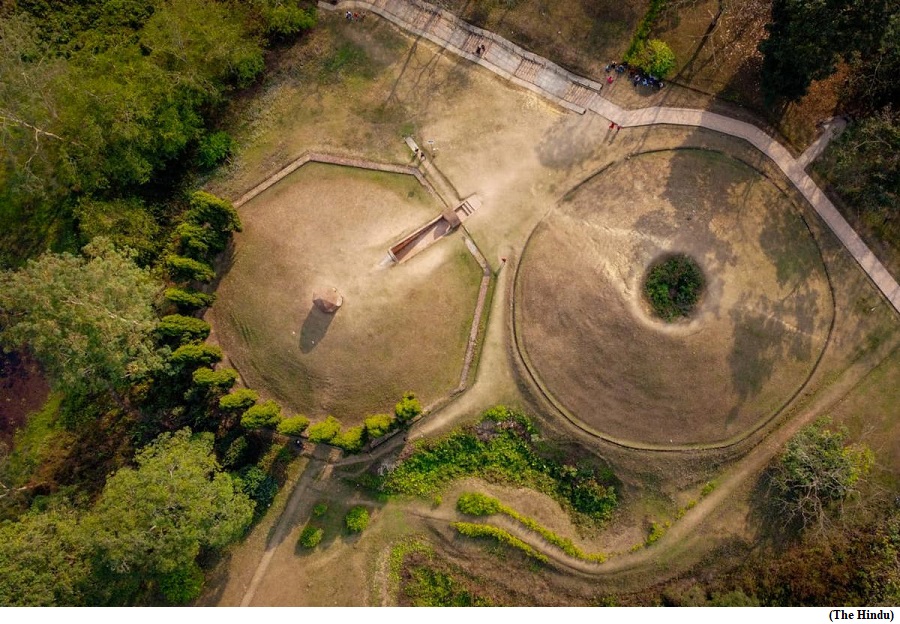China builds new dam in Tibet near Indian border (GS Paper 2, International Relation)

Why in news?
- In a development that is a matter of concern to both India and Nepal, China is constructing a new dam on the Mabja Zangbo River in Tibet, close to the tri-junction, satellite imagery has revealed.
- The new dam is located around 16 km north of the tri-junction and is opposite the Kalapani area of Uttarakhand.
Details:
- The satellite images show the activity since May 2021 in the Burang county of Tibet that shares its border with Nepal.
- The images show the formation of an embankment type dam with a reservoir.
Related concerns:
- In addition to using water as leverage, the possibility of a military establishment by China near the tri-junction cannot be ruled out as the country had developed the same in the Yarlung Zangbo river near Arunachal Pradesh.
- China could use this dam to not only divert but also store water which could lead to a scarcity in the regions dependent on the Mabja Zangbo river as also lead to lower water levels in rivers such as the Ghaghara and the Karnali in Nepal.
- Dams close to the border could be used by China to strengthen its claim on the disputed areas in the region.
China’s hydro project:
- In 2021, China announced that it would construct a massive dam on the lower reaches of Yarlung Zangbo to generate up to 70 GW of power, three times that of the country’s Three Gorges dam, which is the world’s largest hydropower plant in terms of installed capacity.
- This was among several other hydropower projects announced by China to generate clean energy and achieve carbon neutrality by 2060.
Mabja Zangbo:
- Mabja Zangbo originates in Nagari county of Tibet, flows through Nepal into the Ghaghara river before joining the Ganga in India.
Yarlung Zangbo:
- The Yarlung Zangbo, as the Brahmaputra is known in Tibet, originates in the Himalayas in Tibet, enters India in Arunachal Pradesh, passes through Assam and then Bangladesh before emptying into the Bay of Bengal.
Pyramid-like Ahom burial mounds in Assam to vie for UNESCO World Heritage Site tag
(GS Paper 1, Culture)
Why in news?
- The Centre has decided to nominate Assam’s Charaideo Maidams, the Ahom equivalent of the ancient Egyptian pyramids, for the UNESCO World Heritage Centre in 2023.

Ahom Dynasty:
- Prime Minister chose the maidams, representing the late medieval (13th-19th century CE) mound burial tradition of the Tai Ahom community in Assam, from among 52 sites across the country seeking the World Heritage Site tag.
- The Ahom rule lasted for about 600 years until the British annexed Assam in 1826.
- Charaideo, more than 400 km east of Guwahati, was the first capital of the Ahom dynasty founded by Chao Lung Siu-Ka-Pha in 1253.
What are Charaideo Maidams?
- Out of 386 Maidams or Moidams explored so far, 90 royal burials at Charaideo are the best preserved, representative of and the most complete examples of mound burial tradition of the Ahoms.
- The Charaideo Maidams enshrine the mortal remains of the members of the Ahom royalty, who used to be buried with their paraphernalia.
- After the 18th century, the Ahom rulers adopted the Hindu method of cremation and began entombing the cremated bones and ashes in a Maidam at Charaideo.
Lachit Barphukan:
- The nomination of the Charaideo Maidams has attained significance at a time when the country is celebrating the 400th birth anniversary of Lachit Barphukan.
- Lachit Barphukan is a legendary Ahom general whose battle against the Mughals in 1671 made him a BJP icon.



